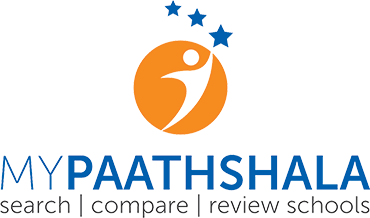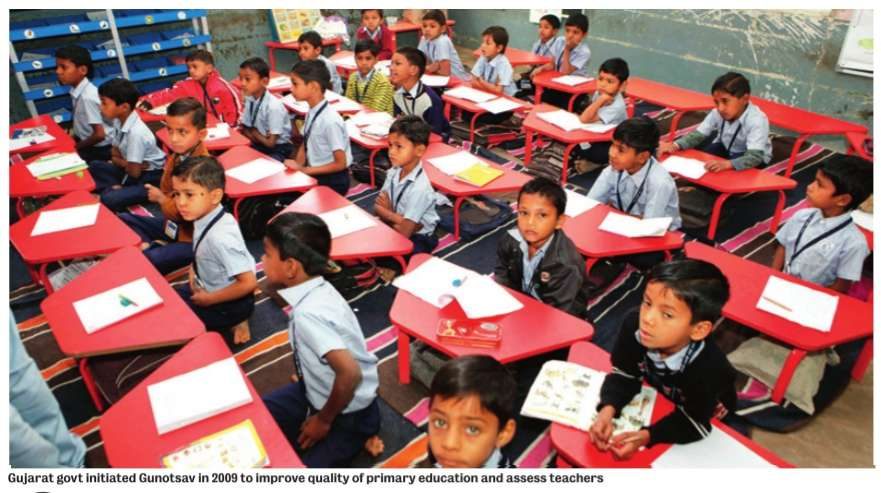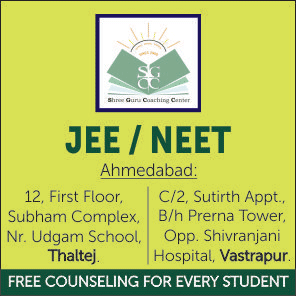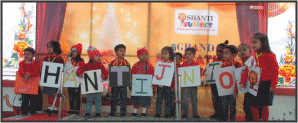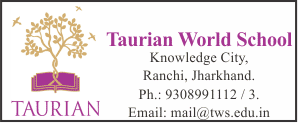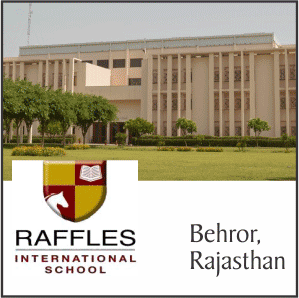Std 1 to 8 students in govt, pvt schools found struggling in mother tongue besides arithmetic and English
At a time when Chief Minister Vijay Rupani and his ministerial colleagues are busy evaluating quality of education through Gunotsav 2017 -an initiative to evaluate primary education scenario and grade primary school teachers -the Annual Status of Education Report (ASER) announced in New Delhi on Wednesday has raised red flags about the quality of education imparted in Gujarat. ASER evaluates students based on three skills: reading in Gujarati, arithmetic as well as reading and comprehension in English.
23.4% class 8 pupils can’t read Gujarati para
According to ASER report, 23.4% students enrolled in class 8 could not correctly read a paragraph in their mother tongue, Gujarati. The statistics are equally dismal for other sections: 47% of students studying in class 5, 45% students in class 6 and 31% student in class 7 failed to read a paragraph in basic Gujarati language.
Statistics also revealed that 11% class 8 students could not read a word in Gujarati while 13.3% could read only simple paragraph in Gujarati, with accuracy. However, they failed in reading complex level 2 paragraph.
ASER largest survey in rural India
ASER is considered to be the largest annual household survey in rural India that focuses on the status of children’s schooling and basic learning. Facilitated by Pratham, an organisation working in the field of education, the survey is carried out by volunteers from local partner organisations in almost all the rural districts of India. For ASER 2016, volunteers reached 589 rural districts covering 17,473villages, 350,232 households and 562,305 children in the age group 3-16. In Gujarat the survey was carried out in 779 villages, covering 15,557 households and 12,923 students in the age group 3-16. The students are picked from government as well as private schools, said Vasant Makwana, a member of Pratham.
65.2% class 8 students failed to do division
Arithmetic is considered one of the toughest subjects for students and the ASER data indicates that 65.2% students enrolled in class 8 could not do division, the most difficult yardstick of evaluation. Survey of class 7 shows that 73.2% of students enrolled could not do division. The figure stood at 81% in class 6 and 83.9% in class 5. In class 4, 93.2% of the students could not do division. As per the report, children are expected to do 2-digit subtraction with borrowing by standard 2. The data states that only 18.3% students in government schools and 31.9% students in private schools studying in class 3 could do subtraction.
62.4% std 8 pupils can’t read English sentence
With poor record in even the mother tongue, students were found struggling to grasp English. Call it the impact of inadequate number of teachers and their poor quality, as many as 62.4% students enrolled in class 8 could not read a sentence in English. The sentences included simple ones like: “What is the time?“, “This is a large house“.
Experts blame govt, teachers and parents
Failure of a large number of students to read a paragraph in Gujarati invoked sharp criticism from academicians and linguists. Rajendra Patel, trustee of Matrubhasha Abhiyan, said the government, teachers and parents are equally responsible for the sorry state of affairs. “No detention policy is the reason behind this situation where students even of standard 8 cannot read a paragraph properly. Teachers are to be blamed because students want to study but teachers are indifferent to their duty. Parents are also responsible for not paying attention to children’s studies.“
On the flip side, he welcomed the move of the state government to include exams in grade 3, 5 and 8 as it will ensure students remain focused.


Source – Ahmedabad Mirror – 19th January 2017
